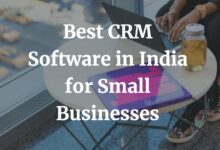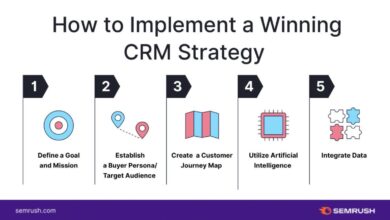Cloud based crm systems examples: Top 7 Cloud Based CRM Systems Examples: Ultimate Power Guide
In today’s fast-paced digital world, businesses need smarter ways to manage customer relationships. Enter cloud based CRM systems examples — powerful, scalable, and accessible from anywhere. Let’s dive into the best platforms transforming how companies connect with their customers.
What Are Cloud Based CRM Systems?

Cloud based CRM systems are customer relationship management tools hosted on remote servers, accessible via the internet. Unlike traditional on-premise software, these platforms eliminate the need for physical infrastructure, offering real-time data access, automatic updates, and seamless integration with other business tools.
How Cloud CRM Differs from On-Premise CRM
The fundamental difference lies in deployment. On-premise CRM requires companies to install and maintain software on their own servers, which demands IT staff, hardware investment, and regular maintenance. In contrast, cloud based CRM systems examples operate on subscription models, reducing upfront costs and technical overhead.
- Deployment: Cloud CRM is hosted online; on-premise is installed locally.
- Cost: Cloud solutions offer predictable monthly fees; on-premise involves high initial capital.
- Maintenance: Vendors handle updates and security for cloud CRMs.
- Scalability: Cloud platforms scale easily with business growth.
“The shift to cloud CRM has democratized access to enterprise-grade tools, allowing even small businesses to compete globally.” — Gartner Research, 2023
Key Benefits of Using Cloud Based CRM Systems
Adopting a cloud-based CRM brings transformative advantages across departments. From sales to customer service, the impact is measurable and immediate.
- Accessibility: Access your CRM from any device with an internet connection — desktop, tablet, or smartphone.
- Automatic Updates: Stay current without manual intervention; vendors roll out new features seamlessly.
- Disaster Recovery: Data is backed up across multiple servers, minimizing risk of loss.
- Integration Capabilities: Easily connect with email, marketing automation, ERP, and e-commerce platforms.
- Cost Efficiency: Pay-as-you-go pricing lowers barriers to entry.
For example, Salesforce, one of the most prominent cloud based CRM systems examples, reports that 90% of its customers see improved sales productivity within six months of adoption.
Top 7 Cloud Based CRM Systems Examples in 2024
The market for cloud based CRM systems examples is vast and competitive. To help you make an informed decision, we’ve analyzed the top seven platforms based on functionality, user experience, scalability, and value.
1. Salesforce Sales Cloud
Salesforce remains the gold standard in cloud CRM. Its Sales Cloud product is a comprehensive solution designed for businesses of all sizes, offering robust sales automation, lead tracking, forecasting, and AI-powered insights through Einstein Analytics.
- Features: Opportunity management, contact tracking, workflow automation, mobile access, and AppExchange for third-party integrations.
- Best For: Mid-sized to large enterprises needing deep customization and scalability.
- Pricing: Starts at $25/user/month (Essentials), up to $300/user/month (Unlimited).
Salesforce integrates with over 3,000 apps via its AppExchange, making it one of the most flexible cloud based CRM systems examples available. Learn more at Salesforce Official Site.
2. HubSpot CRM
HubSpot CRM stands out for its user-friendly interface and powerful free tier. It’s ideal for startups and small businesses looking to grow without breaking the bank. The platform combines CRM with marketing, sales, and service hubs for a unified customer experience.
- Features: Contact & deal tracking, email tracking, meeting scheduling, live chat, and marketing automation.
- Best For: Small to mid-sized businesses focused on inbound marketing.
- Pricing: Free core CRM; paid tiers start at $45/month (Starter).
One of the most praised aspects of HubSpot among cloud based CRM systems examples is its intuitive design. Users report getting up and running in under an hour. Explore it at HubSpot CRM.
3. Zoho CRM
Zoho CRM offers a balance of affordability and functionality. With AI-driven sales assistant Zia, workflow automation, and strong mobile capabilities, it’s a favorite among growing businesses.
- Features: Sales forecasting, pipeline management, social CRM, telephony integration, and AI insights.
- Best For: SMBs wanting advanced features at a lower cost.
- Pricing: Starts at $14/user/month (Standard), with enterprise plans at $52/user/month.
Zoho CRM supports over 40 languages and integrates with more than 500 applications. It’s also GDPR-compliant, making it suitable for global operations. Visit Zoho CRM for details.
4. Microsoft Dynamics 365 Sales
For organizations already embedded in the Microsoft ecosystem, Dynamics 365 Sales offers seamless integration with Outlook, Teams, and Office 365. It’s a powerful cloud based CRM system that blends sales automation with AI insights and productivity tools.
cloud based crm systems examples – Cloud based crm systems examples menjadi aspek penting yang dibahas di sini.
- Features: Lead scoring, relationship analytics, embedded Excel, and LinkedIn Sales Navigator integration.
- Best For: Enterprises using Microsoft 365 and seeking deep integration.
- Pricing: $65/user/month (Professional), $225/user/month (Enterprise).
Dynamics 365 is particularly effective for B2B sales teams. Its integration with LinkedIn allows reps to identify decision-makers and engage with personalized outreach. Learn more at Microsoft Dynamics 365.
5. Pipedrive
Pipedrive is built for sales-focused teams who want a visual, pipeline-driven CRM. Its drag-and-drop interface makes it easy to track deals and manage follow-ups, making it one of the most intuitive cloud based CRM systems examples.
- Features: Visual sales pipeline, activity reminders, email integration, reporting, and automation.
- Best For: Sales teams prioritizing pipeline visibility and deal management.
- Pricing: Starts at $14.90/user/month (Essential), up to $99/user/month (Advanced).
Pipedrive excels in simplicity and clarity. According to user reviews, 85% of sales managers say it improved their team’s productivity within the first month. Check it out at Pipedrive.
6. Freshsales (by Freshworks)
Freshsales is a modern CRM with built-in phone, email, and chat capabilities. It’s designed for speed and ease of use, featuring AI-based lead scoring and a clean, intuitive dashboard.
- Features: Smart contact management, built-in calling, email tracking, AI insights, and workflow automation.
- Best For: Sales teams wanting an all-in-one communication and CRM platform.
- Pricing: Free for up to 3 users; paid plans start at $15/user/month.
Freshsales reduces the need for third-party tools by integrating calling and engagement directly into the CRM. This makes it a standout among cloud based CRM systems examples for efficiency. Visit Freshsales for more.
7. Insightly
Insightly combines CRM with project management, making it ideal for businesses managing complex customer projects. It supports relationship linking, workflow automation, and customer lifecycle tracking.
- Features: Project management, contact relationship mapping, automation, and mobile access.
- Best For: Service-based businesses and consultants managing long-term client projects.
- Pricing: Starts at $29/user/month (Pro), up to $75/user/month (Enterprise).
Insightly’s unique strength lies in its ability to link projects to contacts and opportunities, providing a holistic view of customer engagement. Explore it at Insightly.
How to Choose the Right Cloud Based CRM System for Your Business
Selecting the right cloud based CRM systems examples isn’t just about features — it’s about alignment with your business goals, team size, industry, and budget.
Assess Your Business Needs
Start by identifying your core challenges. Are you struggling with lead tracking? Poor customer follow-up? Lack of sales visibility? Define your pain points before evaluating platforms.
- Do you need marketing automation?
- Is integration with existing tools (e.g., email, calendar, e-commerce) critical?
- Will your team require mobile access?
For instance, an e-commerce business might prioritize integration with Shopify, while a consulting firm may need project management features like those in Insightly.
Consider Scalability and Integration
Your CRM should grow with your business. Look for platforms that offer tiered pricing and modular features. Integration with tools like Slack, Google Workspace, or Zapier can significantly enhance productivity.
- Check API availability for custom integrations.
- Verify compatibility with your current tech stack.
- Ensure data migration is supported when switching from another system.
Salesforce and HubSpot lead in integration ecosystems, offering thousands of pre-built connectors. This makes them among the most future-proof cloud based CRM systems examples.
Evaluate User Experience and Training
No matter how powerful a CRM is, it’s useless if your team won’t use it. Prioritize platforms with intuitive interfaces and strong onboarding support.
cloud based crm systems examples – Cloud based crm systems examples menjadi aspek penting yang dibahas di sini.
- Look for free trials or demos.
- Check for available training resources (videos, webinars, documentation).
- Consider mobile app quality and offline functionality.
Pipedrive and HubSpot are often praised for their ease of use, while Salesforce, though powerful, has a steeper learning curve.
Implementation Tips for Cloud Based CRM Systems
Even the best cloud based CRM systems examples can fail without proper implementation. Follow these best practices to ensure a smooth rollout.
Start with Clear Goals and Data Strategy
Define what success looks like. Is it a 20% increase in lead conversion? Faster response times? Better customer retention? Align your CRM setup with these KPIs.
- Clean your existing customer data before migration.
- Standardize naming conventions and data fields.
- Assign data ownership and access levels.
Poor data quality is one of the top reasons CRM projects fail. Invest time in data hygiene upfront.
Train Your Team Effectively
User adoption is critical. Provide hands-on training, create internal documentation, and designate CRM champions within each department.
- Run workshops and role-based training sessions.
- Encourage feedback and address concerns promptly.
- Use gamification to boost engagement (e.g., rewards for logging activities).
According to Nucleus Research, companies that invest in CRM training see a 144% higher return on investment than those that don’t.
Monitor Performance and Optimize
After launch, continuously monitor usage and performance. Use built-in analytics to track adoption rates, sales cycle length, and customer satisfaction.
- Set up dashboards for key metrics.
- Regularly review and refine workflows.
- Update automation rules based on real-world usage.
Most cloud based CRM systems examples offer audit logs and user activity reports — use them to identify bottlenecks and improve processes.
Common Challenges and How to Overcome Them
Despite their benefits, cloud based CRM systems examples come with challenges. Being aware of them helps you prepare and mitigate risks.
Data Security and Privacy Concerns
Storing sensitive customer data in the cloud raises valid concerns. However, reputable providers invest heavily in security.
- Look for SOC 2, ISO 27001, or GDPR compliance.
- Enable two-factor authentication (2FA).
- Use role-based access controls to limit data exposure.
For example, Salesforce encrypts data at rest and in transit and undergoes regular third-party audits.
User Resistance and Low Adoption
Employees may resist change, especially if the CRM feels like extra work. To overcome this:
- Involve users in the selection process.
- Highlight personal benefits (e.g., easier follow-ups, less manual entry).
- Start with a pilot group before company-wide rollout.
Transparency and communication are key to reducing resistance.
cloud based crm systems examples – Cloud based crm systems examples menjadi aspek penting yang dibahas di sini.
Integration Complexity
While most cloud CRMs offer integrations, connecting legacy systems or custom apps can be tricky.
- Use middleware like Zapier or Make (formerly Integromat) for no-code connections.
- Consult with the CRM vendor’s support team for complex setups.
- Test integrations in a sandbox environment first.
HubSpot and Zoho offer extensive integration marketplaces, reducing the need for custom development.
Future Trends in Cloud Based CRM Systems
The landscape of cloud based CRM systems examples is evolving rapidly, driven by AI, automation, and customer expectations.
AI and Predictive Analytics
AI is no longer a luxury — it’s a necessity. Modern CRMs use AI to predict customer behavior, recommend next steps, and automate routine tasks.
- Salesforce Einstein predicts deal closure likelihood.
- HubSpot uses AI to suggest email subject lines.
- Zia by Zoho automates data entry and detects sentiment in emails.
By 2025, Gartner predicts that 80% of CRM interactions will be influenced by AI.
Hyper-Personalization and Customer Journey Mapping
Customers expect personalized experiences. CRMs are evolving to map entire customer journeys across channels — from first touch to post-sale support.
- Track interactions across email, social media, chat, and phone.
- Use behavioral data to trigger personalized campaigns.
- Deliver context-aware support using CRM insights.
Platforms like Microsoft Dynamics 365 and Salesforce are leading in omnichannel journey mapping.
Mobile-First and Remote Work Enablement
With remote work here to stay, mobile CRM access is essential. Future CRMs will prioritize mobile UX, offline functionality, and voice-enabled data entry.
- Freshsales and Pipedrive offer robust mobile apps.
- Voice-to-CRM features are emerging (e.g., logging calls directly to records).
- GPS-based check-ins for field sales teams.
The next generation of cloud based CRM systems examples will be designed for mobility first.
Real-World Success Stories Using Cloud Based CRM Systems
Theoretical benefits are great, but real-world results matter more. Here are three companies that transformed their operations using cloud based CRM systems examples.
Case Study 1: Tech Startup Scales with HubSpot
A SaaS startup with 15 employees struggled with lead management and inconsistent follow-ups. After implementing HubSpot CRM (free tier), they automated email sequences, tracked website visitors, and integrated with their calendar.
- Result: 40% increase in qualified leads within 3 months.
- Sales cycle shortened by 25%.
- Team adoption reached 95% due to ease of use.
They later upgraded to the paid Marketing Hub to run targeted campaigns.
Case Study 2: Manufacturing Firm Boosts Sales with Zoho CRM
A mid-sized manufacturer used spreadsheets to manage 5,000+ customer records. After switching to Zoho CRM, they automated lead assignment, implemented territory management, and used Zia for forecasting.
cloud based crm systems examples – Cloud based crm systems examples menjadi aspek penting yang dibahas di sini.
- Result: 30% improvement in sales forecasting accuracy.
- Reduced manual data entry by 60%.
- Enabled remote access for field sales reps.
The ROI was achieved within 8 months.
Case Study 3: Nonprofit Enhances Donor Engagement with Salesforce
A nonprofit organization needed a way to track donor interactions, manage campaigns, and report impact. They adopted Salesforce Nonprofit Cloud, a specialized version of Sales Cloud.
- Result: 50% increase in donor retention.
- Automated thank-you emails and renewal reminders.
- Generated real-time impact reports for stakeholders.
The platform’s scalability allowed them to expand programs without adding staff.
Conclusion: Why Cloud Based CRM Systems Are Essential
Cloud based CRM systems examples are no longer optional — they’re essential for staying competitive. From improving customer relationships to boosting sales efficiency, the right CRM can transform your business. Whether you choose Salesforce for enterprise power, HubSpot for inbound marketing, or Pipedrive for sales simplicity, the key is to align the tool with your goals. With proper planning, training, and optimization, your CRM can become the central nervous system of your organization.
What is a cloud based CRM system?
A cloud based CRM system is a customer relationship management platform hosted on remote servers and accessed via the internet. It allows businesses to manage customer data, track interactions, automate sales processes, and improve customer service without needing on-site hardware or software installation.
What are the best cloud based CRM systems examples for small businesses?
For small businesses, HubSpot CRM (free tier), Zoho CRM, and Freshsales are excellent choices due to their affordability, ease of use, and strong feature sets. Pipedrive is also ideal for sales-focused startups.
How much do cloud based CRM systems cost?
Prices vary widely. Free options like HubSpot CRM and Freshsales offer basic features. Paid plans typically range from $14 to $300 per user per month, depending on functionality, scalability, and vendor.
Can cloud CRM systems integrate with other business tools?
Yes, most cloud based CRM systems examples integrate seamlessly with email, marketing automation, e-commerce, accounting, and productivity tools via APIs or pre-built connectors. Platforms like Salesforce and HubSpot offer thousands of integrations.
Is my data safe in a cloud CRM?
cloud based crm systems examples – Cloud based crm systems examples menjadi aspek penting yang dibahas di sini.
Reputable cloud CRM providers use advanced encryption, regular security audits, and compliance certifications (e.g., GDPR, SOC 2) to protect your data. Always enable additional security features like two-factor authentication.
Recommended for you 👇
Further Reading:







